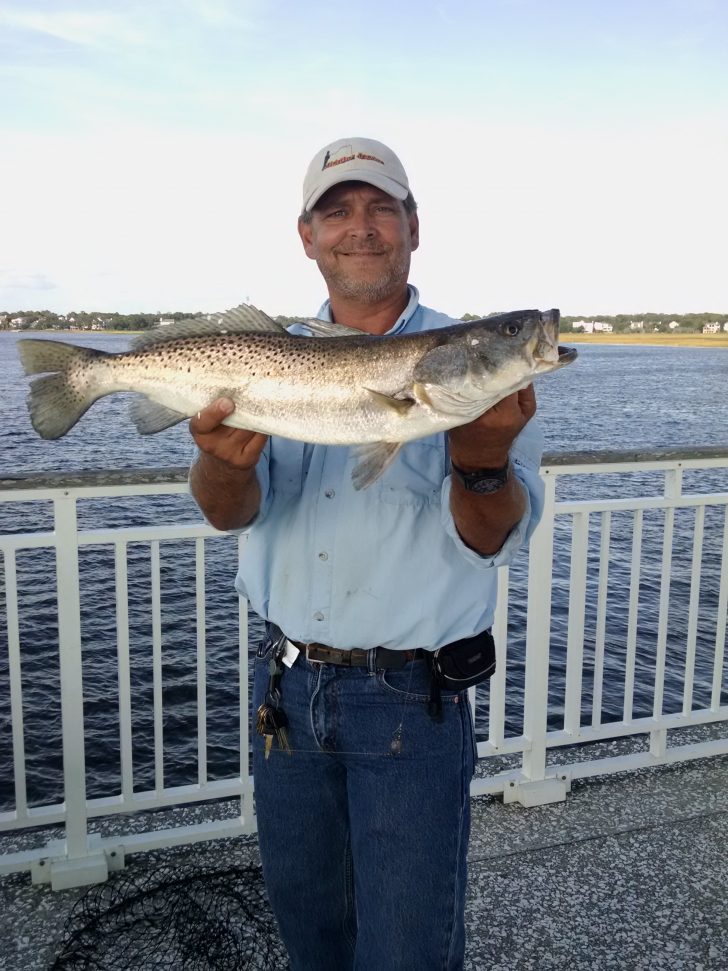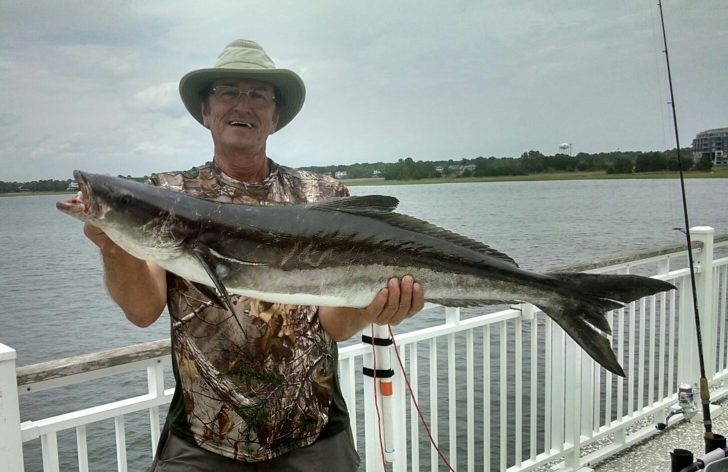Inshore fishing can be fun, and fishing from piers and beaches are easier access to the water for individuals or families that don’t have access to a boat or don’t feel like going through all the hard work of gassing and launching a boat in the water, worrying about the weather, rough water, etc. But fishing from piers and beaches definitely does not mean they are easier to fish from. This is when it becomes important to know how to play your fish.

Playing the fish means fighting the fish by using your fishing rod, reel and line to battle the fish. The drag system on the reel is tightened to a desired amount of pressure to slow the fish down like a braking system on a car, but not locked down to the point of breaking your fishing line.
Knowing the pound test fishing line you are using, say 20 pound test for instance is important because you don’t want to exceed 20 pounds of pressure that the line would not be able to endure, causing the line to fail.
Your rod strength is something else you will have to keep an eye on. Rods have a weight limit as well. If the weight limit is exceeded on the rod, the rod will snap. You will notice this in the rod bend. If the rod has exceeded its bend, your rod will snap. This can be avoided by the position the rod is held during the fight. Holding the rod straight up will cause a strong bend and curl in the rod, which can cause the rod to snap. Pointing the rod directly at the fish will take all the pressure off the rod, leaving it to just the fishing line and reel. A 45-degree position is one of the best positions to use while fighting a fish, and using the rod to pull the fish toward you until the rod reaches its 45-degree angle, and then bringing the rod back down and reeling in the slack is one of the proper ways of playing a fish.
The more fish you fight, the more experience you gain. You will start to learn how to anticipate a fish’s direction, knowing whether they are bedding

themselves down on the ocean floor or heading for deeper water or coming up for a jump. After all, you never know what type of fish you may run into in these darker waters of the Lowcountry, and knowing how to play a fish will help you land a fish.
Don Mounce, a Mount Pleasant Pier regular, was using Mud Minnows on a Carolina rig. Don was targeting the inshore slam, which is Red Drum, Spotted Seatrout and Flounder, but to Don’s surprise, a Cobia with a measurement of 37 inches and over 20 pounds decided to be the taker of Don’s Mud Minnow. On 15-pound test on a light action rod in a flash, Don only had seconds to recall his experience on playing a fish.
Don had to anticipate this fish’s moves. He had to immediately set his drag to tire the fish out but not snap his line. He had to maneuver his rod in positions and in directions to counter the fish’s, and off a pier where there is debris and pier footers to get in the way. Unlike a boat, Don was unable to chase the fish down if he started to run out of line. But amongst the chaos and in the flash of a moment, Don emerged successful and landed the first legal-size Cobia off the Mount Pleasant Pier, all because he knew how to play the fish.
So this summer, don’t just go out fishing but go out to play and play those fish. After all, if done correctly, you too can have a moment to last a lifetime. Until next time, good luck out there and have fun fishing!


